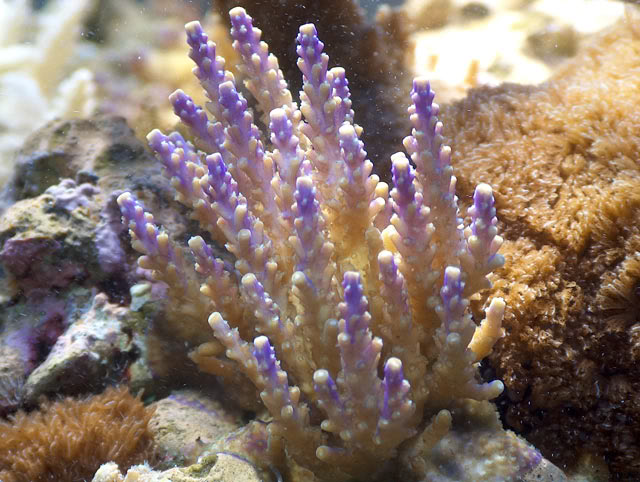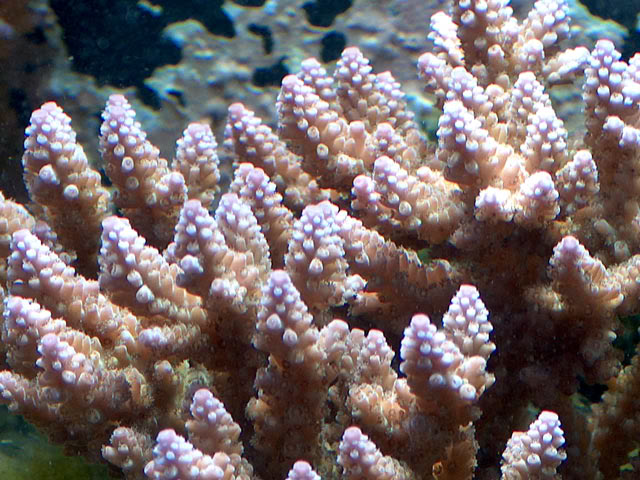I know that SPS are becoming more popular with a lot of the members of the site, so I've been asked to relay some of my experiences with acro eating flat worms (AEFW's). Anyone else with experiences, feel free to chime in, too. If you get nothing else from this, I think you'll see how important it is to prevent things from getting in through diligent QT.
About two years ago, I noticed that my favorite garf coral had washed out in color. It was normally a gold color with neon green polyps (I think it was called the gold bonsai by Norm at one time?). The skin had gotten really pale and appeared to have oval shaped bite marks all over it. The polyp extension dropped to next to nothing. At that time, I was just hearing about AEFW's and all the discussion on how to get rid of them. I posted some pictures, but didn't get a definitive answer (was also having the alk issues, so maybe that was the cause of the fading).

I decided to dip the affected corals in an Iodine dip to see what came off. About 15 minutes in, I noticed a small, oval shaped clearish white thing floating around. Then I noticed ten or so more. They were every where. Stomach sank, but there seemed to be some promising results from Levamisole HCl (a pig wormer found at the local CO-OP) in a QT setting, so I started figuring out how I was going to do run the treatment.
I decided to set up a 20L. I happened to have a spare 12x30 stand, 175W MH, and a 20L, so all I had to do was ghetto up the canopy.

The skimmer is more for looks than function . It did very little for me, but it was sporadic at best when I used it on a display.
. It did very little for me, but it was sporadic at best when I used it on a display.
I pulled every acro in the tank, including every scrap of encrusted acro.



It all got loaded into the 20 and awaited treatment.




About two years ago, I noticed that my favorite garf coral had washed out in color. It was normally a gold color with neon green polyps (I think it was called the gold bonsai by Norm at one time?). The skin had gotten really pale and appeared to have oval shaped bite marks all over it. The polyp extension dropped to next to nothing. At that time, I was just hearing about AEFW's and all the discussion on how to get rid of them. I posted some pictures, but didn't get a definitive answer (was also having the alk issues, so maybe that was the cause of the fading).

I decided to dip the affected corals in an Iodine dip to see what came off. About 15 minutes in, I noticed a small, oval shaped clearish white thing floating around. Then I noticed ten or so more. They were every where. Stomach sank, but there seemed to be some promising results from Levamisole HCl (a pig wormer found at the local CO-OP) in a QT setting, so I started figuring out how I was going to do run the treatment.
I decided to set up a 20L. I happened to have a spare 12x30 stand, 175W MH, and a 20L, so all I had to do was ghetto up the canopy.

The skimmer is more for looks than function
I pulled every acro in the tank, including every scrap of encrusted acro.



It all got loaded into the 20 and awaited treatment.






































